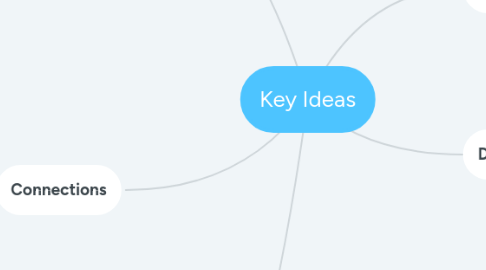
1. Community-Based Sustainable Development
1.1. Might still include degradation
1.2. Might unintentionally be inequitable
1.3. Tearing down old infrastructure for new "sustainable" infrastructure sounds good, but if you imagine how much landfill space it would take to dump all the old infrastructure into and how many natural resources, environmental degradation, and carbon output it would take to build all new "sustainable" infrastructure, we would have half of a planet worth of a landfill
1.3.1. It's problematic to think new is better, old infrastructure was build to be efficient, since they were built when a/c and heating didn't exist. a building build in 1900 hasn't contributed to carbon output, forest deforestation and other things since 1900
1.3.1.1. Restoration is profitable, and creates jobs, look at Walnut Way-bing bing bing
2. Connections
2.1. Sustainable Restoration
2.1.1. Return on Investment
2.1.2. Still important as a means for investment for architects, planners, policymakers
2.1.3. Good for people and planet
2.1.4. old structures: made in a lot of different sizes, and mixed us, and aprtment buildings, serve everyone. New structures, ticky tacky, can be culturally unrelevant, poor quality, won't stand up to climate change and are not resilient.
2.1.4.1. ex: sustainably forested wood doesn't have environmental pressures like wind, so the wood grain isn't strong, it can't even withstand one hole for a plumbing pipe. Wood used in houses and buildings 100 years ago can have hundreds of holes and still withstand major environmental disasters
2.2. Older spaces can host social infrastructure better than brand new buildings like suburban neighborhoods. rustic, historic downtowns are are civic centers of dialogue, the key to social infrastructure as Gravel talks about.
2.2.1. Old way, traditional way, made room for transport, access to healthcare, jobs, food.... wasn't perfect, but holds the potential for more equitable society
3. Personal Implications
3.1. Cities won't stop building, the development industry is a sickness, in many ways, and planners are pulled into that and part of it
3.2. Because of the green wave and trendiness, people are convinced we have to build new sustainable housing and buildings to beat climate change, which it utterly false and perpetuated by the development people disguised to doing the right thing, but still operating in the industry. sorry to say
3.3. We have to push for sustaining the old, current assets if we want Raworth's economics to start with human and planetary wellbeing.
3.4. This society has an addiction on new things, the disposable everything culture. We'll just get a new one, instead of fix our shoe, frypan, computer, etc.
4. Growth Economies
4.1. Deprivation
4.2. Degradation
4.2.1. development degrades environment, like urban sprawl
4.2.2. development like urban sprawl strips the planet of it's resources for buildings that have a life of 30-50 years, hardly a return on investment in the new era of real estate.
4.3. Inequality
4.3.1. The ticky tacky development is designed for some, not all, gentrification

